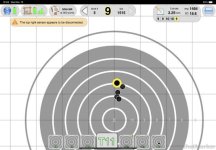Do any of you load for a 6 x 47 Remington? This is the .222 Magnum necked up to 6mm. It's often confused with the 6 x 47 Lapua which is a different animal altogether. I snagged a Remington 40-XBR at the Cabelas gun library a couple years ago. Evidently other customers were uninterested or didn't know what it was so I got a "can't walk away" deal.
The rifle is a tack driver at 100 yds and I'm now playing with it at 500 yards. The cartridge was intended for 100 and 200 yard benchrest back in the day, so 500 yards is a lot to ask. A short, stubby bullet fired at moderate velocity is hard pressed to perform at 500 - but I'm a fool for a challenge. Heavier bullets aren't the answer due to the slow 14" twist.
I see significant vertical dispersion at 500 yards and can correlate it with minor variations in muzzle velocity. I'm looking for suggestions on a powder choice that might give more consistent muzzle velocities.
Any thoughts?
The rifle is a tack driver at 100 yds and I'm now playing with it at 500 yards. The cartridge was intended for 100 and 200 yard benchrest back in the day, so 500 yards is a lot to ask. A short, stubby bullet fired at moderate velocity is hard pressed to perform at 500 - but I'm a fool for a challenge. Heavier bullets aren't the answer due to the slow 14" twist.
I see significant vertical dispersion at 500 yards and can correlate it with minor variations in muzzle velocity. I'm looking for suggestions on a powder choice that might give more consistent muzzle velocities.
Any thoughts?

